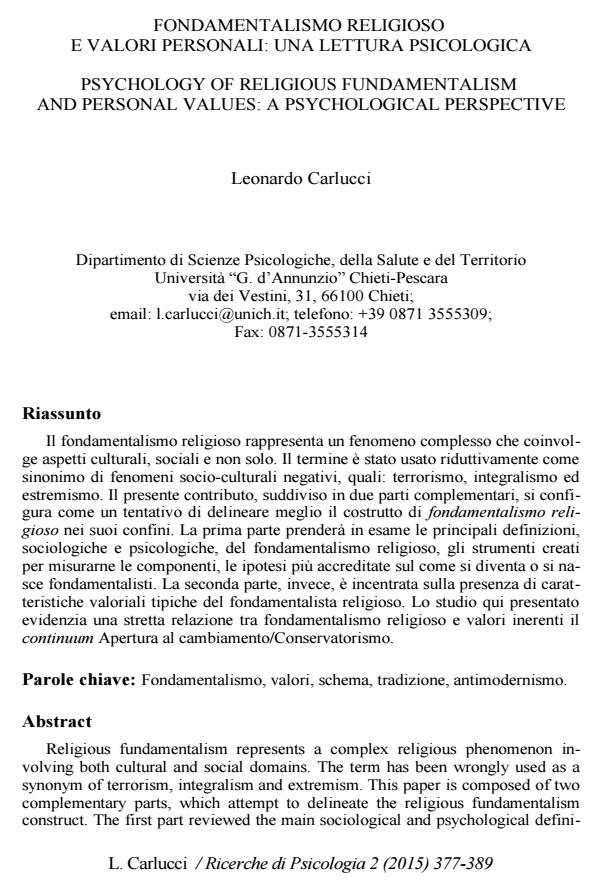Psychology of religious fundamentalism and personal values: a psychological perspective
Journal title RICERCHE DI PSICOLOGIA
Author/s Leonardo Carlucci
Publishing Year 2015 Issue 2015/2
Language Italian Pages 13 P. 377-389 File size 181 KB
DOI 10.3280/RIP2015-002007
DOI is like a bar code for intellectual property: to have more infomation
click here
Below, you can see the article first page
If you want to buy this article in PDF format, you can do it, following the instructions to buy download credits

FrancoAngeli is member of Publishers International Linking Association, Inc (PILA), a not-for-profit association which run the CrossRef service enabling links to and from online scholarly content.
Religious fundamentalism represents a complex religious phenomenon involving both cultural and social domains. The term has been wrongly used as a synonym of terrorism, integralism and extremism. This paper is composed of two complementary parts, which attempt to delineate the religious fundamentalism construct. The first part reviewed the main sociological and psychological defini tions of the religious fundamentalism, the instruments created to measure its components, the most credible hypothesis on the evolution of fundamentalists. The second part investigated the presence of typical value-characteristics of the religious fundamentalist. The study highlights the significant relationship between the religious fundamentalism and values on the Openness/Conservatism continuum.
Keywords: Fundamentalism, values, schema, tradition, antimodernism
- Religious Fundamentalism between Traits and Values Leonardo Carlucci, Armin W. Geertz, Laura Picconi, Michela Balsamo, in The Open Psychology Journal /2021 pp.24
DOI: 10.2174/1874350102114010024 - Does a Fundamentalist Mindset Predict a State or Trait Anxiety? The Covariate Role of Dogmatism Leonardo Carlucci, Bashar Albaghli, Aristide Saggino, Michela Balsamo, in Journal of Religion and Health /2021 pp.1029
DOI: 10.1007/s10943-020-01016-5
Leonardo Carlucci, Fondamentalismo religioso e valori personali: una lettura psicologica in "RICERCHE DI PSICOLOGIA " 2/2015, pp 377-389, DOI: 10.3280/RIP2015-002007